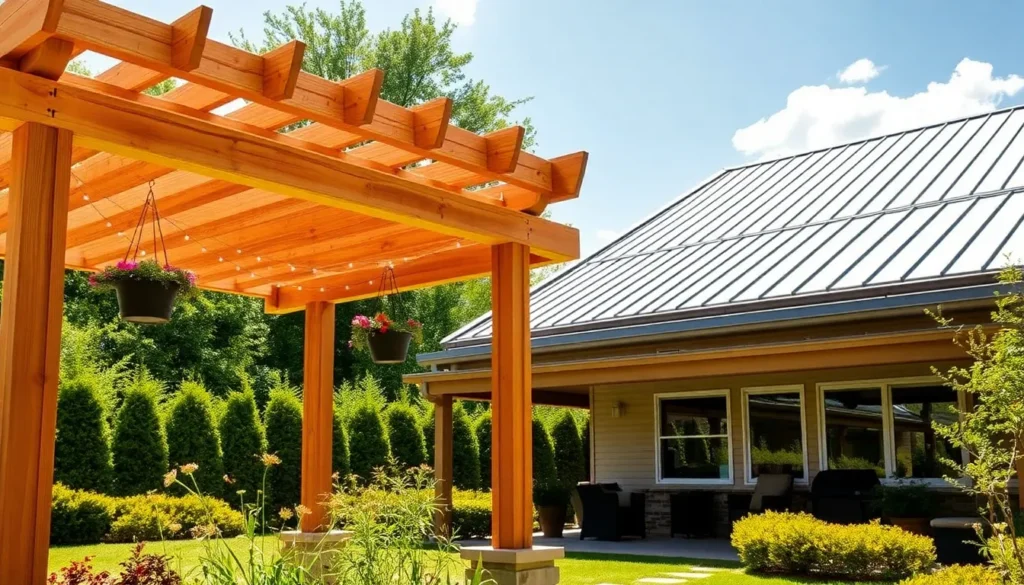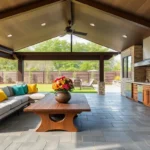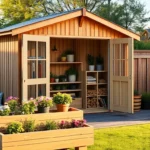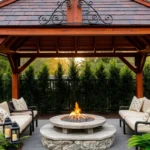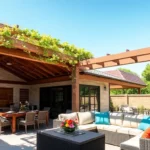Creating a welcoming outdoor space is a delightful way to extend your living area while enjoying the beauty of nature. Whether you’re just starting your patio journey or are looking to enhance your existing setup, the right patio roof material is crucial for durability and aesthetic appeal. A well-chosen roof not only shields you from the elements but also complements your home’s style, ensuring your outdoor oasis remains inviting and functional year-round.
In this article, we’ll explore nine patio roof materials that have proven their worth over time, turning your outdoor space into a true sanctuary. From classic wood to modern polycarbonate, you’ll discover options that suit various tastes and budgets, each with its own unique benefits. Let’s delve into these materials so you can make informed, confident choices for your patio’s future.
Exploring Durable Patio Roof Options
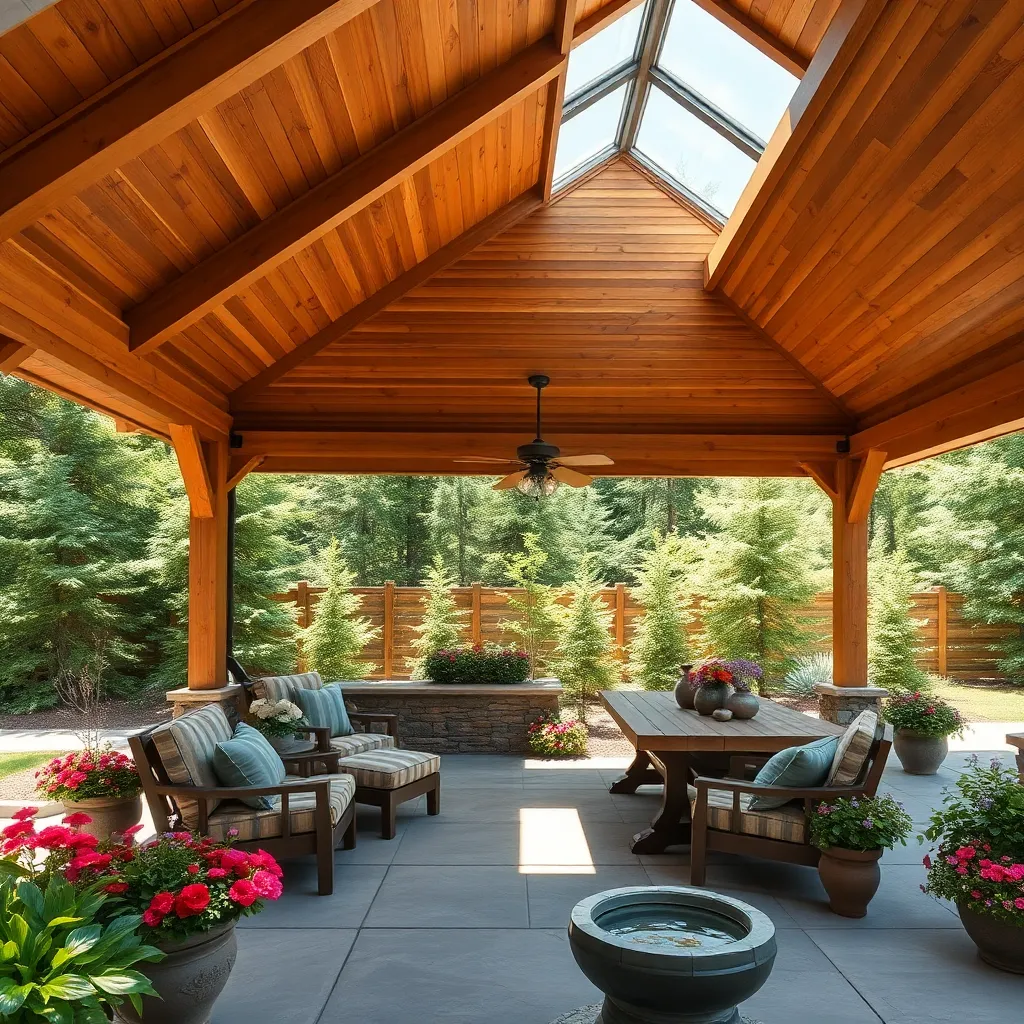
When exploring durable patio roof options, consider materials that offer both longevity and aesthetic appeal. Aluminum and polycarbonate panels are excellent choices, combining durability with lightweight properties, making them ideal for a variety of climates. For a more natural look, wooden pergolas with treated lumber can provide a rustic charm while offering robust protection against the elements.
Advanced construction techniques can enhance both the functionality and style of your patio roof. Incorporate sloped designs to facilitate water runoff and prevent accumulation, which is crucial for maintaining the integrity of the structure. For those with a flair for design, integrating retractable canopies or solar panels can add versatility and eco-friendliness, creating a space that adapts to your needs year-round.
Understanding Longevity in Roofing Materials
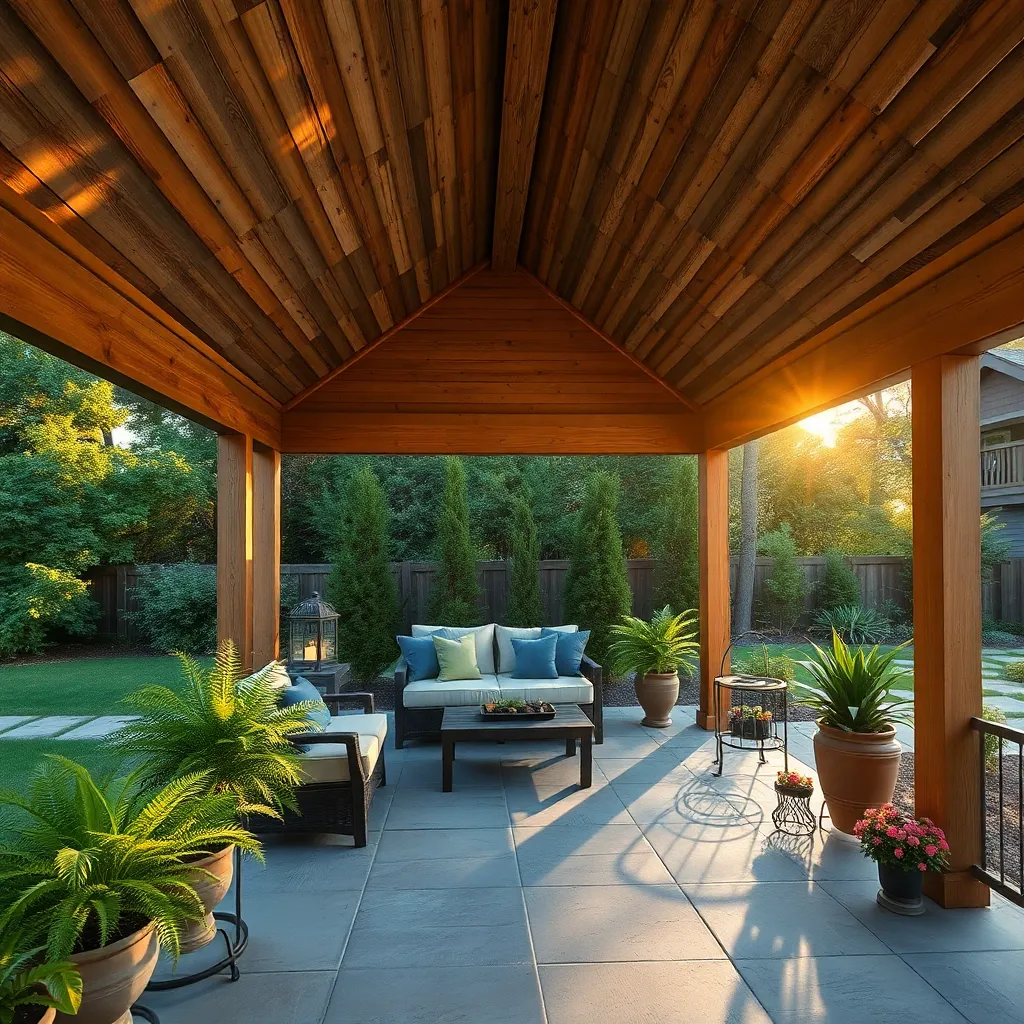
Understanding the longevity of roofing materials is crucial when selecting a patio cover that will endure through the years. Metal roofing, such as aluminum or steel, offers impressive durability and resistance to weather elements, making it a popular choice for areas prone to harsh conditions. For those seeking a more natural aesthetic, cedar wood is not only visually appealing but also boasts a natural resistance to rot and insect damage. When installing, ensure proper sealing and regular maintenance to extend the lifespan of these materials.
Additionally, synthetic options like polycarbonate panels provide a modern touch with their UV resistance and lightweight properties. These panels allow for creative designs, such as curved or sloped roofs, and can easily be installed on existing structures. For a more advanced project, consider combining materials, such as a metal frame with polycarbonate panels, to enhance both durability and style. Remember, choosing the right material involves balancing aesthetics, climate considerations, and maintenance capabilities to ensure your patio roof stands the test of time.
Classic Wood: Timeless Appeal
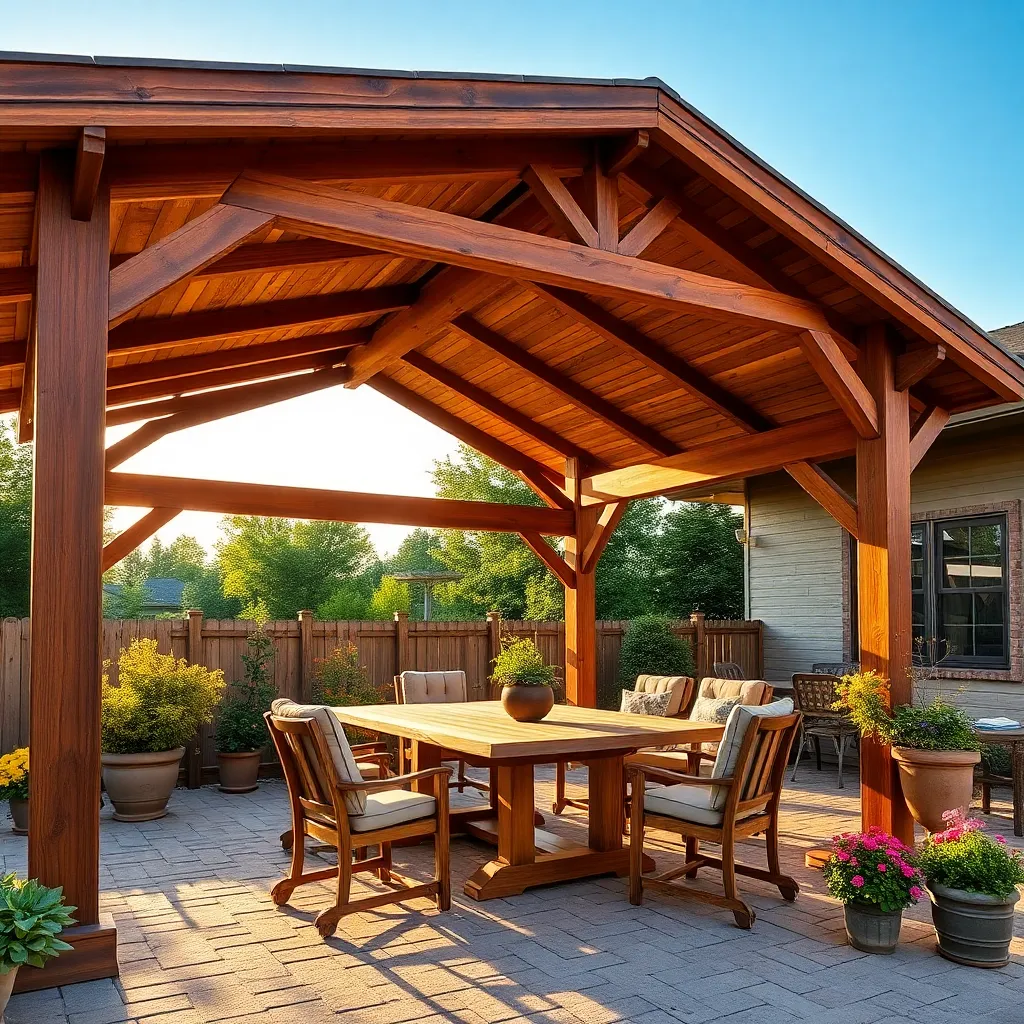
Embodying a blend of durability and charm, classic wood patio roofs are a favorite among homeowners for their timeless appeal. To create a wooden shelter that stands the test of time, opt for sturdy woods like cedar, redwood, or pressure-treated pine, which resist decay and insects naturally. Ensure the wood is sealed with a high-quality outdoor sealant to enhance its longevity. For a straightforward design, consider a gabled roof that not only offers classic aesthetics but also provides excellent drainage, making it suitable for various climates.
For those looking to add a personal touch, incorporating decorative elements such as exposed beams or latticework can elevate the overall design. Beginners might start with a simple pergola structure, using 4×4 or 6×6 posts for the main support, while more experienced DIYers could explore intricate designs with curved rafters or custom carvings. Remember to use galvanized or stainless steel fasteners to prevent rust and ensure a secure, long-lasting assembly. By blending these practical elements with your unique style, your wood patio roof will not only be a functional outdoor space but also a beautiful extension of your home.
Metal Roofing: Strength and Style
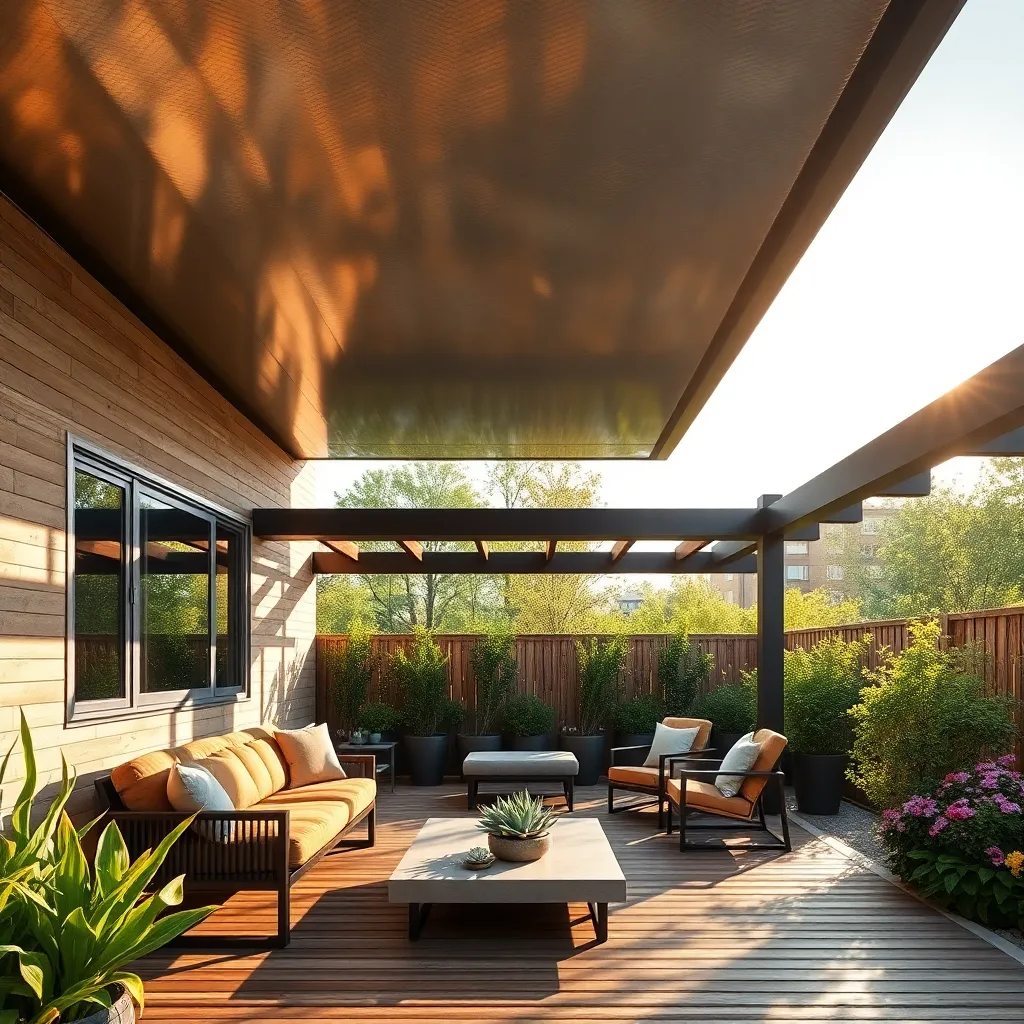
For those seeking both durability and modern aesthetics, metal roofing is an excellent choice for patio shelters. This material is known for its ability to withstand harsh weather conditions, making it ideal for regions with heavy rain or snow. Beginners will appreciate its low maintenance, while more seasoned DIYers can explore different metal options like aluminum or steel for varied looks and strengths. To ensure a snug fit, consider using interlocking panels that not only enhance stability but also add a sleek, streamlined appearance to your outdoor space.
Incorporating metal roofing into your patio design can also offer unique style opportunities. Pair it with minimalist furniture and neutral tones to create a contemporary vibe. For installation, ensure that the roof pitch is at least 3 inches per foot to allow for proper water runoff and prevent pooling. Advanced users might want to explore insulation options to manage temperature and noise. By selecting the right metal type and finish, you can personalize your shelter to complement your home’s architecture while enjoying the practical benefits of this robust material.
Polycarbonate Panels: Light and Sturdy

Polycarbonate panels offer an excellent combination of lightweight durability and high light transmission, making them a smart choice for patio roofing. These panels are incredibly sturdy and can withstand extreme weather conditions, from heavy rain to intense sunlight, without compromising on their integrity. For those looking to create a bright, airy outdoor space, polycarbonate panels are perfect as they allow natural light to filter through while blocking harmful UV rays. When installing, consider a slight slope in the design to ensure proper water runoff, which helps prolong the lifespan of the panels.
For homeowners keen on a modern and sleek look, polycarbonate panels come in various tints and patterns to match your design preferences. They are easy to cut and install, which means you can customize the size and shape to fit your specific patio layout. Beginners might start with a simple rectangular frame, while more experienced DIY enthusiasts can experiment with curved or multi-level designs for added flair. Ensure you use UV-resistant sealing tape at the edges to prevent yellowing over time. With these panels, you can achieve a stylish, low-maintenance patio cover that enhances your outdoor experience.
Clay Tiles: Traditional and Resilient
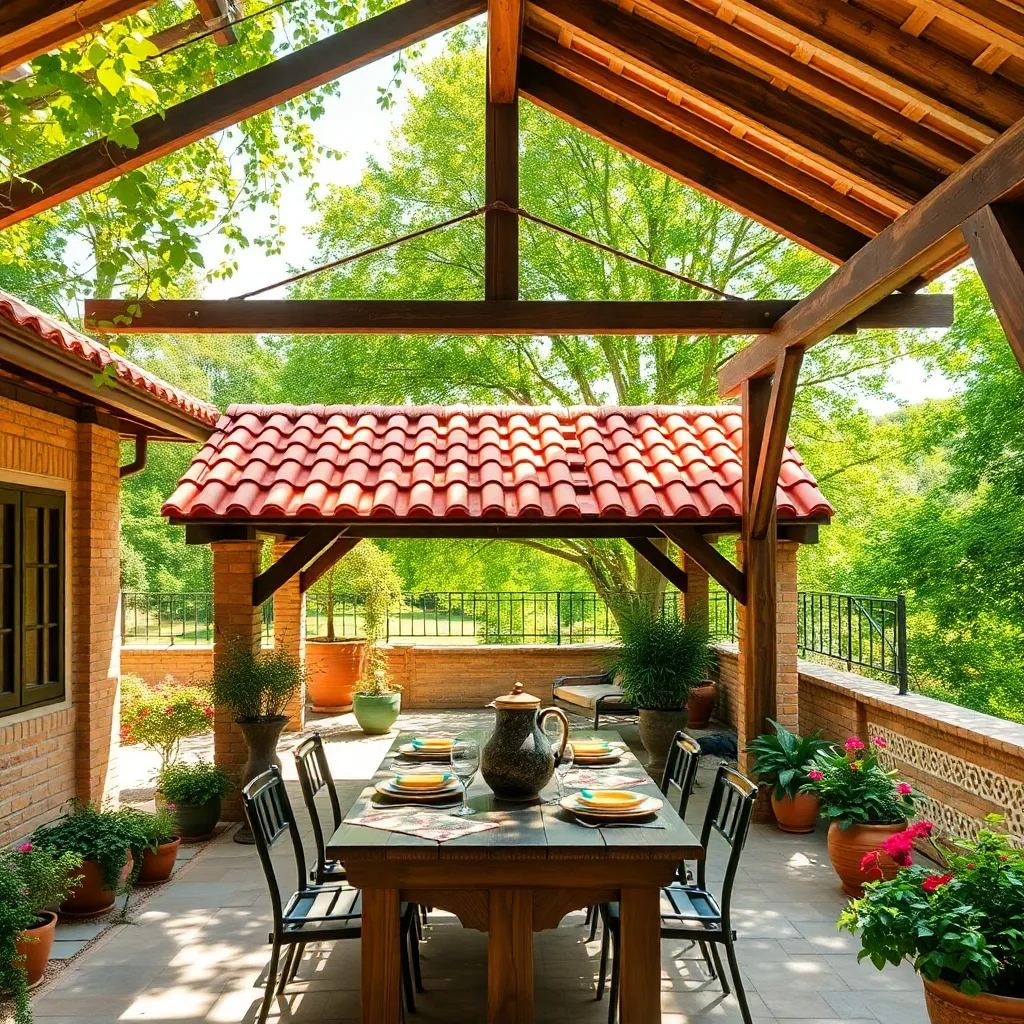
Clay tiles offer a classic and timeless appeal, making them an excellent choice for those seeking a traditional look for their patio roofs. These tiles are renowned for their durability and ability to withstand various weather conditions, from intense sunlight to heavy rainfall. When installing clay tiles, ensure your roof structure can support their weight, as they are heavier than other materials. Consider using a professional installer to achieve the best results.
For a polished look, opt for clay tiles in earthy tones such as terracotta, which complement a wide range of outdoor designs. To enhance their longevity and performance, seal the tiles to protect against moisture absorption and frost damage. A properly maintained clay tile roof can last several decades, providing an elegant and resilient shelter for your outdoor space. Beginners can start with a simple gable or hip roof design, while more experienced DIYers might explore intricate patterns like Spanish or Mission styles.
Concrete Roofs: Solid and Reliable
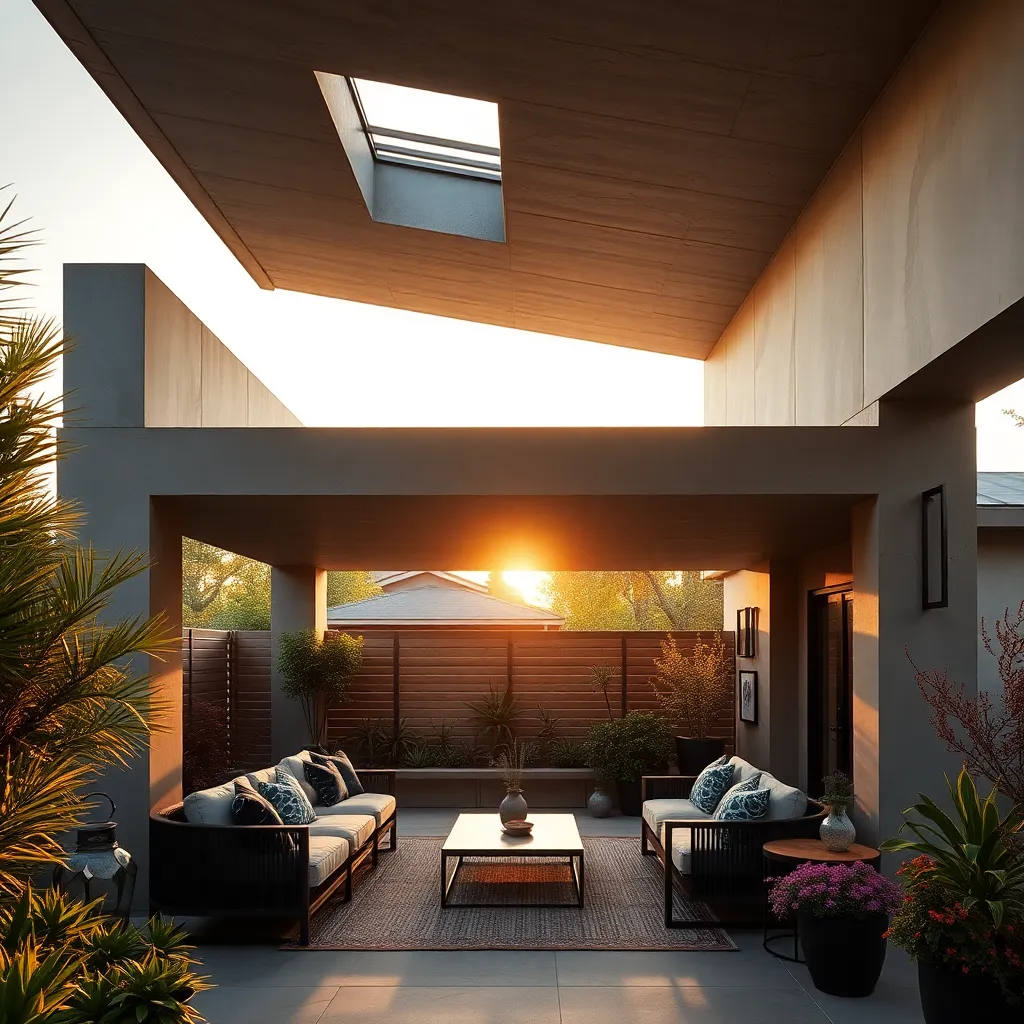
Concrete roofs offer a robust and durable option for your patio, capable of withstanding harsh weather conditions over time. When planning a patio with a concrete roof, consider reinforcing the structure with steel rebar for added strength and longevity. For a basic setup, a thickness of about 4 inches is generally adequate, but if you live in an area prone to heavy snowfall or extreme weather, opting for a thicker slab can provide additional peace of mind.
To enhance the aesthetics, concrete roofs can be customized with decorative finishes such as stamped designs or acid stains. These finishes not only add visual interest but also help in blending the roof seamlessly with your outdoor decor. For those with a bit more experience, integrating insulation layers can improve thermal efficiency, making your patio more comfortable year-round. Remember to consult a structural engineer to ensure your design complies with local building codes and safety standards.
Vinyl Covers: Versatile and Affordable
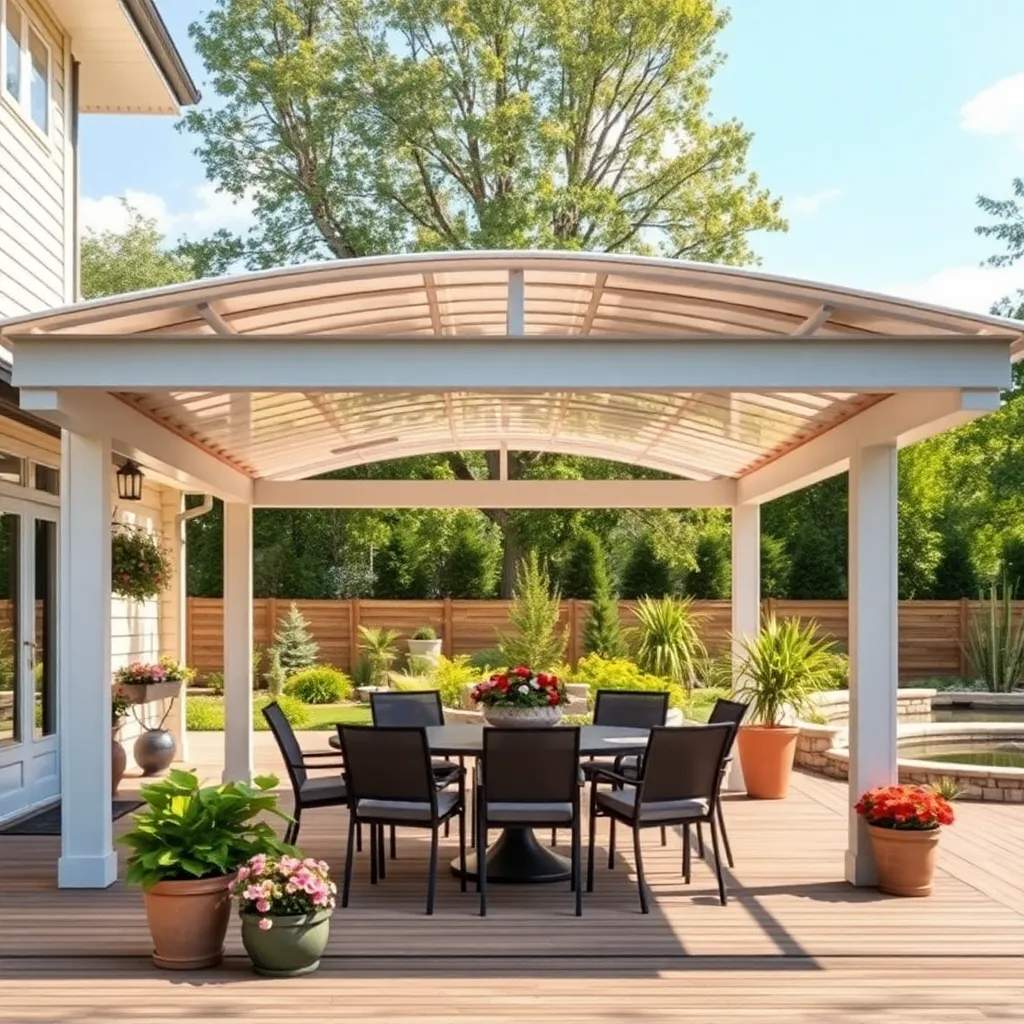
Vinyl covers offer a versatile and budget-friendly solution for patio shelters, providing protection from the elements while enhancing outdoor aesthetics. These covers are available in a wide range of colors and patterns, allowing homeowners to match their patio design seamlessly. For a beginner, installing a vinyl cover is relatively straightforward—simply attach it to a sturdy frame using grommets or hooks. Advanced users might opt for a retractable vinyl cover system, offering flexibility to enjoy both sun and shade.
To maximize the durability of your vinyl cover, choose one that is UV-resistant and has reinforced edges to withstand wind and rain. Consider a thickness of at least 16-18 mils for durability without sacrificing ease of handling. Regular maintenance is key; clean your vinyl cover with a mild soap solution and rinse with water to prevent mold and mildew buildup. For added longevity, store the cover indoors during harsh winter months. By following these simple tips, you can ensure your vinyl cover remains a reliable and attractive feature of your outdoor space.
Green Roofing: Eco-Friendly Durability
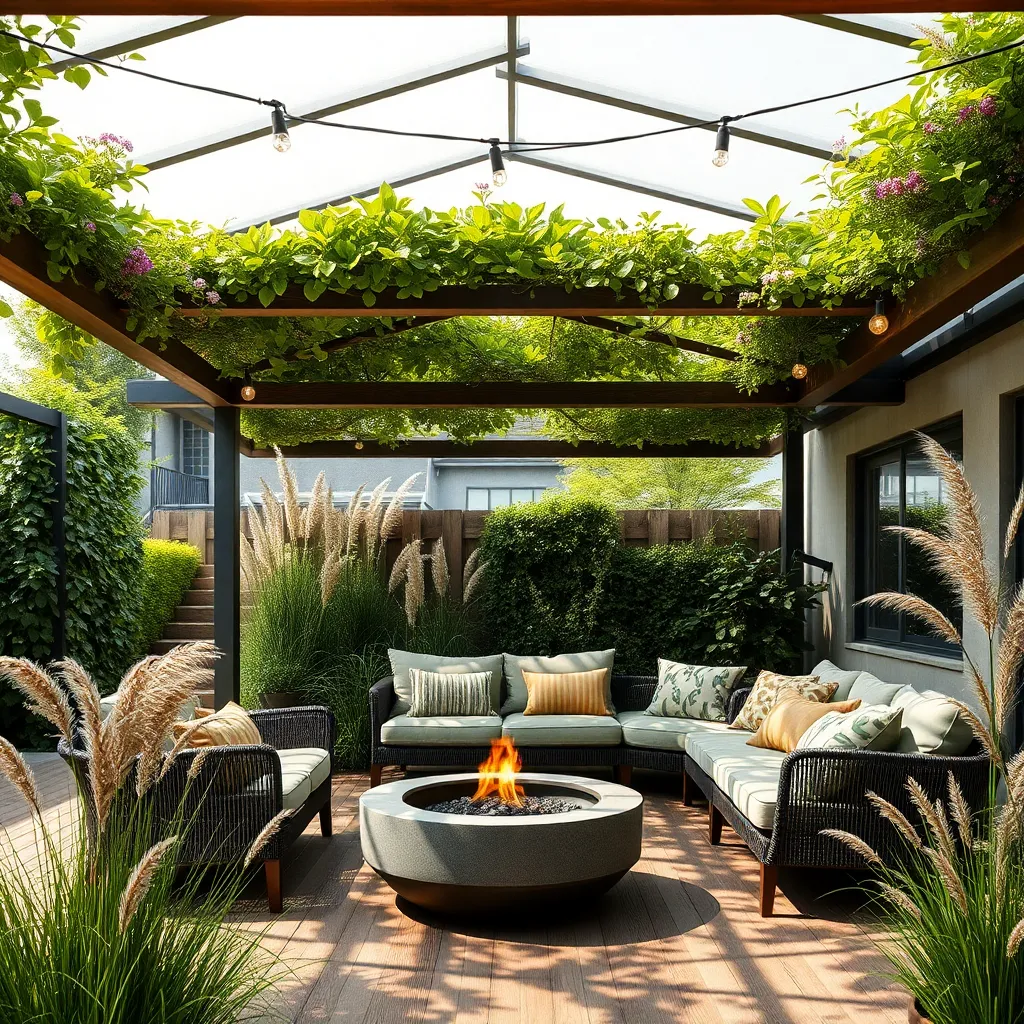
Green roofing is an eco-friendly option that combines durability with environmental benefits, making it an excellent choice for a patio roof. These roofs are essentially layers of vegetation planted over a waterproof membrane, creating a living, breathing shelter. To get started, ensure your patio structure can support the additional weight—consulting a structural engineer may be necessary for larger installations. For beginners, start with a simple sedum mat that requires minimal maintenance and can thrive in various climates.
Incorporating a green roof not only enhances the aesthetic appeal of your outdoor space but also provides excellent insulation and extends the life of your roofing materials. Use lightweight, modular trays to simplify installation and maintenance, allowing for easy replacement or rearrangement of plants. For those looking to take it a step further, consider integrating a rainwater collection system to irrigate your green roof, promoting sustainability. Remember, the key is selecting plants that are well-suited to your climate and require minimal upkeep, ensuring your patio remains a lush, green retreat all year round.
Conclusion: Creating Beautiful Outdoor Spaces
In exploring the enduring qualities of patio roof materials, we can draw valuable parallels to the foundational elements in nurturing lasting relationships. Just as aluminum and steel provide strength, trust fortifies bonds. Polycarbonate’s flexibility mirrors the adaptability needed to thrive together, while wood and thatch add warmth akin to emotional intimacy. The elegance of glass reflects transparency, and fabric’s versatility emphasizes compromise. Finally, the eco-friendliness of green roofs symbolizes the importance of sustainable practices in love.
To begin strengthening your relationships today, identify one area where you can introduce more trust, flexibility, or warmth. Whether it’s having an open conversation or planning a future activity, taking small steps can lead to significant improvements.
We encourage you to save this article as a handy reference for nurturing your bonds over time. Simply bookmark it now to revisit these valuable insights whenever you need inspiration.
Remember, the key to a successful relationship lies in continuously building upon these foundational elements. By investing in these qualities, you are laying the groundwork for a resilient and flourishing partnership. Here’s to creating a love that stands the test of time!

